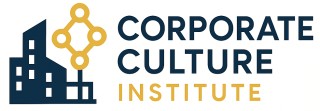
Understanding Product Backlog Refinement
The Essence of Refining Product Backlogs
Refinement of the product backlog is a critical activity within the scrum framework, serving as the backbone of agile project management. Though not explicitly prescribed by the scrum guide, effective backlog refinement is a crucial aspect of agile practices, facilitating better planning and more successful sprints. This process ensures that backlog items are clearly defined, appropriately prioritized, and granular enough for the scrum team to comprehend.
Each sprint involves a significant degree of informal grooming, during which the scrum team collaborates to dissect user stories and other backlog items. The goal is to achieve a mutual understanding of the work that needs to be accomplished in upcoming sprints. This grooming process aids in bridging communication gaps and helps ensure that all team members and the product owner share a coherent vision of the product goal.
Backlog refinement sessions often double as learning opportunities, allowing team members to enhance their understanding of project needs. It's a time when the development team and product owner delve deeper into the intricacies of user stories, ensuring they are sufficiently prepared for sprint planning. This preparation enhances the efficiency of the scrum org’s workflow as it aligns incremental development with the broader sprint goal.
The nuances of backlog grooming lie in how well scrub teams can articulate, evaluate, and organize their ideas. This involves the meticulous organization of backlog items to ensure they are appropriately ordered, thus maximizing the potential of each sprint. By incorporating user feedback and prioritizing urgent needs, the team can effectively guide the course of software development.
In the way teams strengthen their approach to product backlog refinement—aligning insights, feedback, and innovative strategies—they not only streamline their workflows but also bolster the organizational culture. Those interested in how the agile workplace maintains productivity while balancing enthusiasm during festive times should check insights on navigating workplace holidays.
The Role of Corporate Culture in Backlog Grooming
The Significance of Corporate Culture in Effective Refinement
Effective product backlog refinement is deeply intertwined with the corporate culture of a scrum organization. A robust and supportive culture that prioritizes transparency, collaboration, and continuous improvement greatly influences the success of backlog grooming sessions.- Open Communication: An inclusive corporate culture encourages open communication among all team members, from the product owner to the development team. This openness allows team members to freely express their thoughts about backlog items, ensuring that user stories are appropriately refined to meet the sprint goal.
- Collaborative Environment: Harmony in a scrum team is fostered by a collaborative corporate environment. This ensures that during meetings, all voices are heard and respected, leading to well-rounded decisions on refining the backlog that align with the product goal.
- Embracing Agile Principles: A culture ingrained with agile practices empowers teams by supporting flexibility and adaptability. Teams that embrace these practices tend to follow the guidelines set forth in the scrum framework, resulting in efficient sprint planning and successful project management.
- Shared Objectives: When a company's culture is aligned with its broader objectives, such as delivering high-quality software development projects, it aids in streamlining the backlog refinement process. Everyone in the team is aware that backlog grooming serves the larger picture, contributing to a successful product release.
Challenges in Product Backlog Grooming
Addressing Hurdles in Backlog Sessions
In the fast-paced world of agile project management, maintaining an effective product backlog requires consistent attention. While backlog grooming is a key practice within the scrum framework, it doesn't come without its challenges. Let's delve into some common obstacles scrum teams face during backlog refinement and how these hurdles can be addressed for smoother operations.- Prioritization Conflicts: Scrum teams often grapple with differing opinions on backlog item priority. The product owner, development team, and stakeholders may have conflicting ideas, leading to tension. Facilitating open conversations during refinement meetings can help align these differing perspectives, enhancing consensus on the priority criteria.
- Inadequate User Story Detailing: Effective backlog grooming requires user stories to be clearly defined. Issues arise when user stories lack the necessary detail, causing confusion during sprint planning. Encouraging teams to fill in more detailed acceptance criteria ensures that all team members are on the same page, making it easier to estimate the work involved.
- Time Management: Finding the right balance in backlog grooming time allocation is critical. Teams often spend either too little or too much time in these sessions. Implementing a strict agenda and assigning a scrum master to moderate discussions can ensure that sessions are both efficient and effective.
- Changing Requirements: Agile methodology embraces change, but frequent shifts in project scope can unsettle backlog refinement processes. To counteract this, maintaining open lines of communication between the scrum team members and stakeholders can help manage expectations and adjust plans accordingly.
- Lack of Corporate Culture Support: In some cases, the broader corporate culture may not fully support agile practices, thereby hampering backlog grooming. A supportive culture can make a significant difference, as it encourages team empowerment and collaborative spirit. Organizations can benefit by promoting agile values prominently, creating an environment where backlog refinement becomes a routine yet crucial part of their workflow. For more on how corporate culture affects these dynamics, refer to this navigating workplace holidays balancing festivity and productivity analysis.
Best Practices for Effective Backlog Grooming
Optimizing Team Engagement and Communication
A fundamental part of effective backlog grooming is fostering a communicative environment where every team member feels involved and empowered. This can be achieved by ensuring that team members are encouraged to express their thoughts and ideas about backlog items. From the scrum master to the product owner, each member should play an active role in these discussions.Clear Prioritization and Scope Management
When refining the product backlog, it is crucial to clearly define and prioritize user stories. This ensures that the development team's efforts align with the sprint goals and project objectives. Effective prioritization allows the scrum team to focus on tackling high-value backlog items first, which can significantly influence the project's overall success.Regularly Scheduled Backlog Refinement Sessions
Regular backlog refinement sessions are an integral aspect of planning and aligning work. These meetings offer a structured opportunity to review and update backlog items consistently. By doing so, scrum teams can maintain an organized approach to sprint planning, further optimizing their workflow.Tailored Techniques for Backlog Grooming
Best practices for backlog grooming may vary among teams. It is essential to adopt an agile approach tailored to the unique needs of the project and team dynamics. This adaptability allows teams to refine their processes as needed, improving efficiency in product development and software evolution.Continuous Feedback and Process Improvement
Successful backlog refinement depends on an iterative process incorporating continuous feedback from all stakeholders. By soliciting input from team members and other parties involved in the project, the team can identify potential areas for improvement in backlog grooming techniques, ensuring alignment with the scrum framework.The Impact of Leadership on Backlog Grooming
Leadership's Influence on Product Backlog Grooming
The intricate dance of product backlog grooming hinges significantly on the quality of leadership within a scrum organization. The scrum framework outlines roles such as the scrum master, product owner, and team members, each possessing unique responsibilities that steer the development team towards achieving the sprint goal. Leadership provides clarity and vision concerning the product goal. A strong leader communicates effectively with the scrum team, ensuring that it comprehends the priorities of backlog items. This communicative prowess helps align the agile team’s efforts with both short-term sprint objectives and long-term organizational goals.- Strategic Alignment: Leaders within the organization play a pivotal role in aligning the backlog grooming efforts with the overarching company strategy. This alignment not only keeps the team focused but also ensures that each item processed, planned, and worked upon during sprint planning is a stepping stone towards achieving project success.
- Facilitating Collaboration: The presence of a competent leader can foster an atmosphere of collaborative teamwork. Meetings involving backlog refinement become more productive as team members feel empowered to contribute openly, share insights, and refine user stories to perfection.
- Encouraging Feedback: In scrum, constant feedback is paramount. Leaders encourage an open feedback loop where user stories and backlog items are reviewed and refined continually. This feedback mechanism allows the scrum org to stay agile, adjusting priorities and strategies as needed.
- Inspiring Innovation: The development team's creative potential can be unleashed when a leader encourages out-of-the-box thinking. Innovative approaches to tackling backlog items ensure that the product remains competitive and that the user experience is continuously refined.
- Cultivating Ownership: Leaders within the scrum teams instill a sense of ownership amongst team members. When developers, product owners, and the scrum master take ownership of the backlog items, a collective push towards achieving set goals becomes evident – empowering the entire team.
Measuring Success in Backlog Grooming
Evaluating the Effectiveness of Backlog Refinement
Measuring the success of backlog grooming is an essential part of maintaining an efficient Scrum organization. Effective backlog refinement ensures that the product backlog is prioritized and that backlog items are actionable and ready for development teams to work on during the sprint. To assess the impact of backlog grooming, several indicators can be considered:
- Clarity of User Stories: After grooming sessions, user stories should be clear, concise, and easy for team members to understand. This clarity directly feeds into productive sprint planning and effective work execution.
- Sprint Goal Achievement: A well-refined backlog contributes to the attainment of sprint goals. By ensuring tasks and goals are aligned, teams are better positioned to meet objectives.
- Reduced Mid-sprint Interruptions: Backlog grooming minimizes surprises during sprints, reducing the need for unplanned work or disruptions. An efficient grooming process anticipates issues that could arise and addresses them preemptively.
- Feedback from Stakeholders: Continuous feedback from the product owner and stakeholders about the backlog items and their alignment with the product goal is vital for measuring success.
- Team Satisfaction: Regularly assessing scrum team satisfaction can provide insights into whether backlog grooming is effectively supporting their work. Teams that feel prepared have greater engagement and productivity.
Effective backlog management requires continuous attention and refinement, as highlighted by the scrum guide. Ensuring that the backlog supports the scrum framework and project goals is paramount for successful agile software development.













